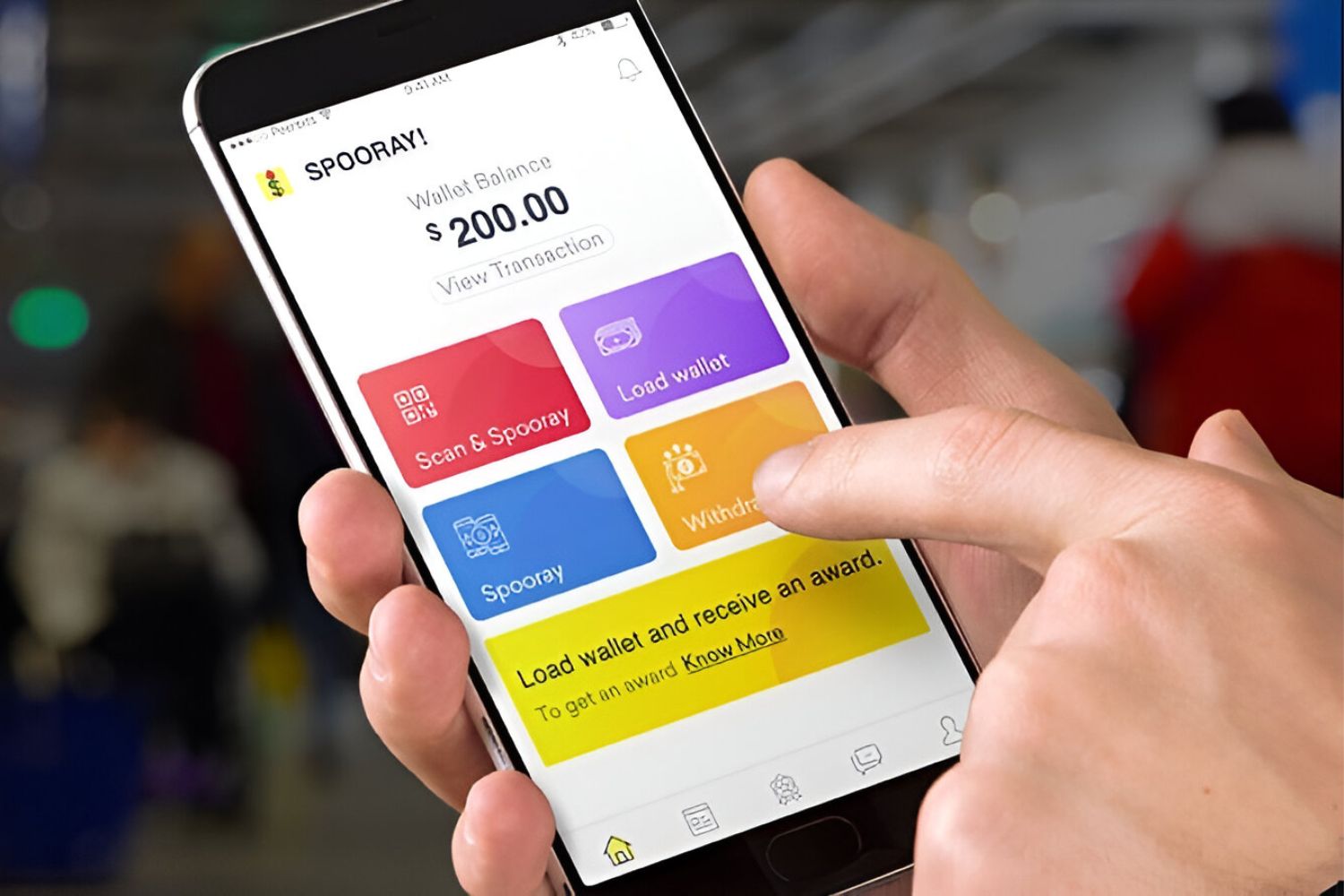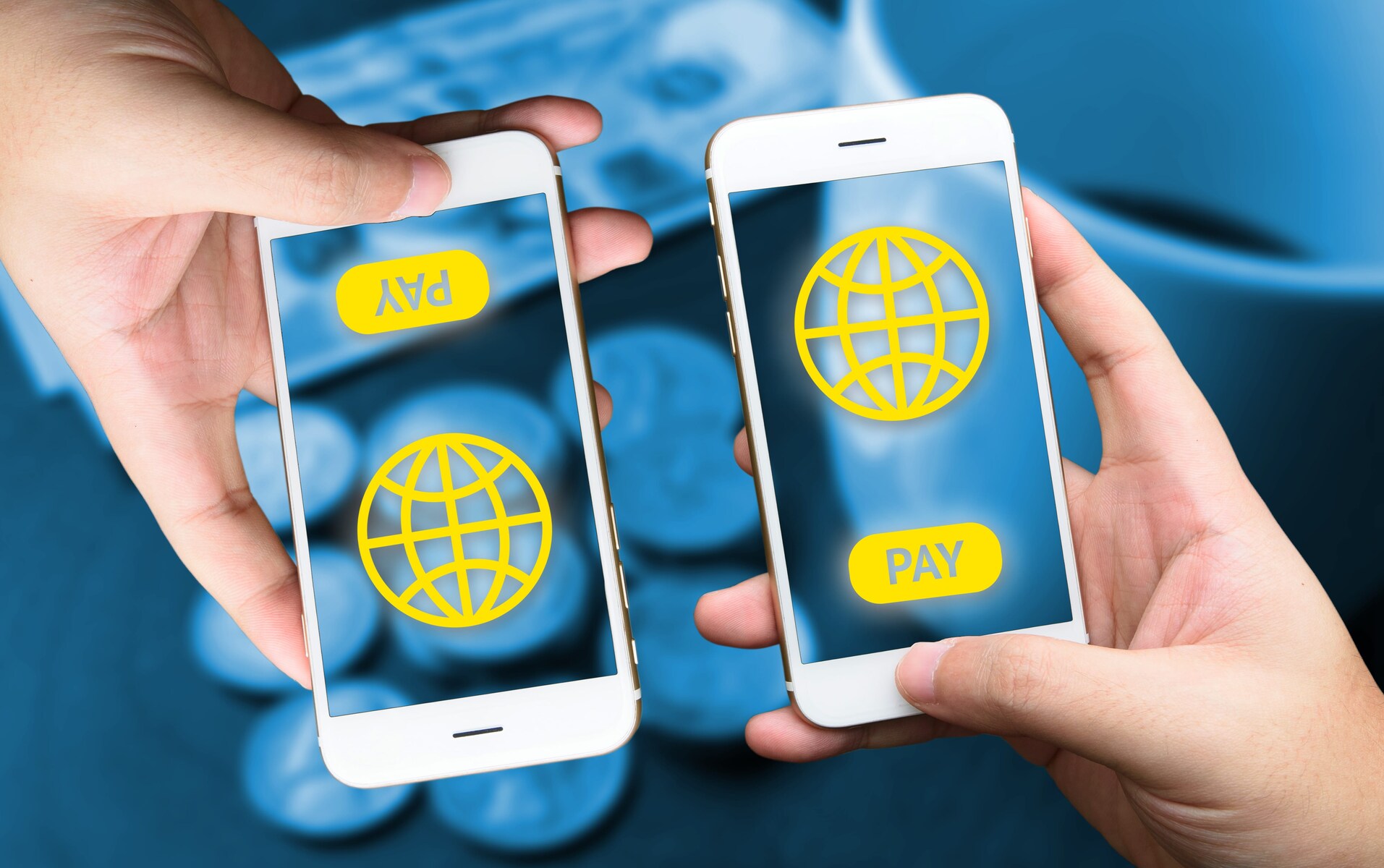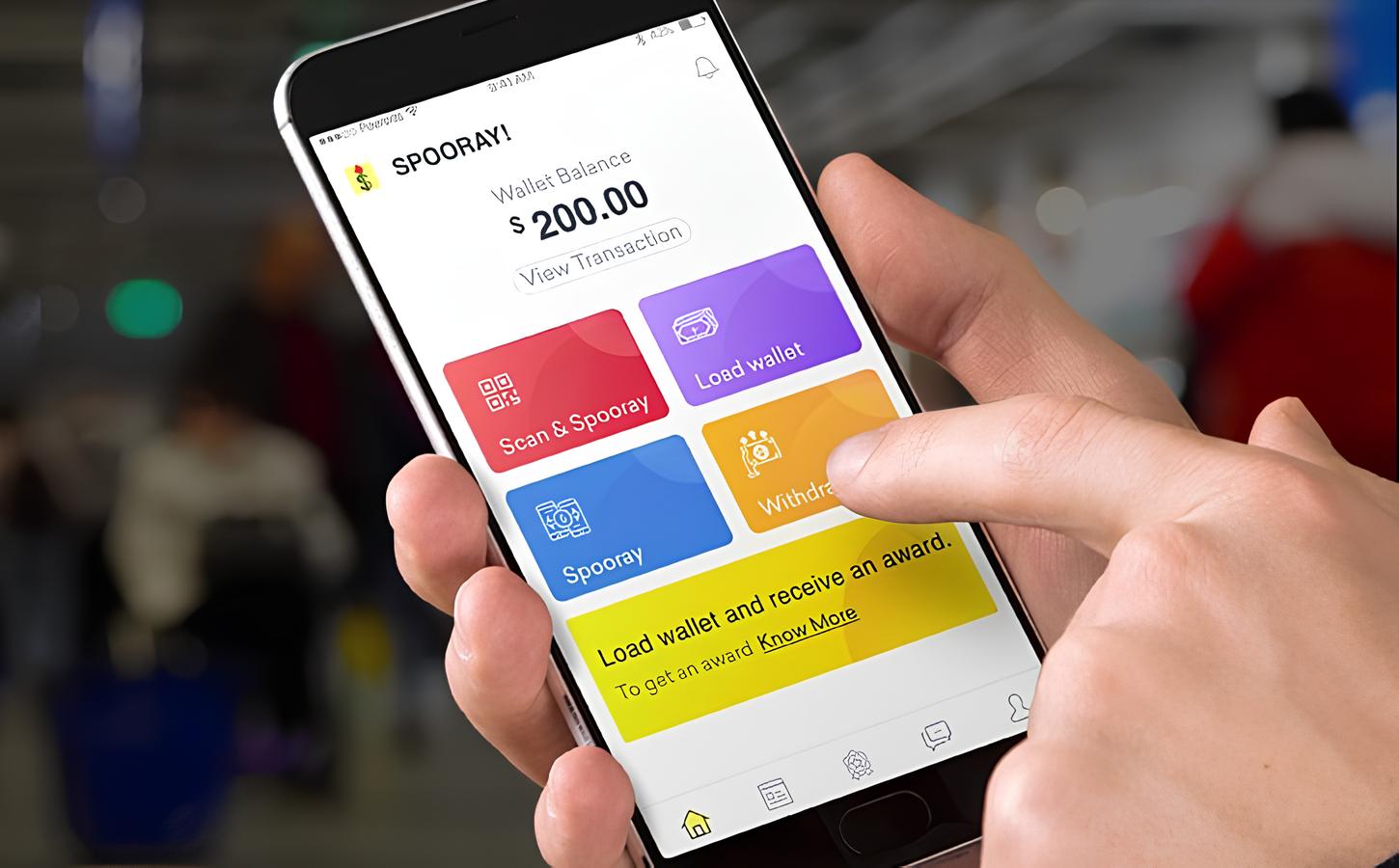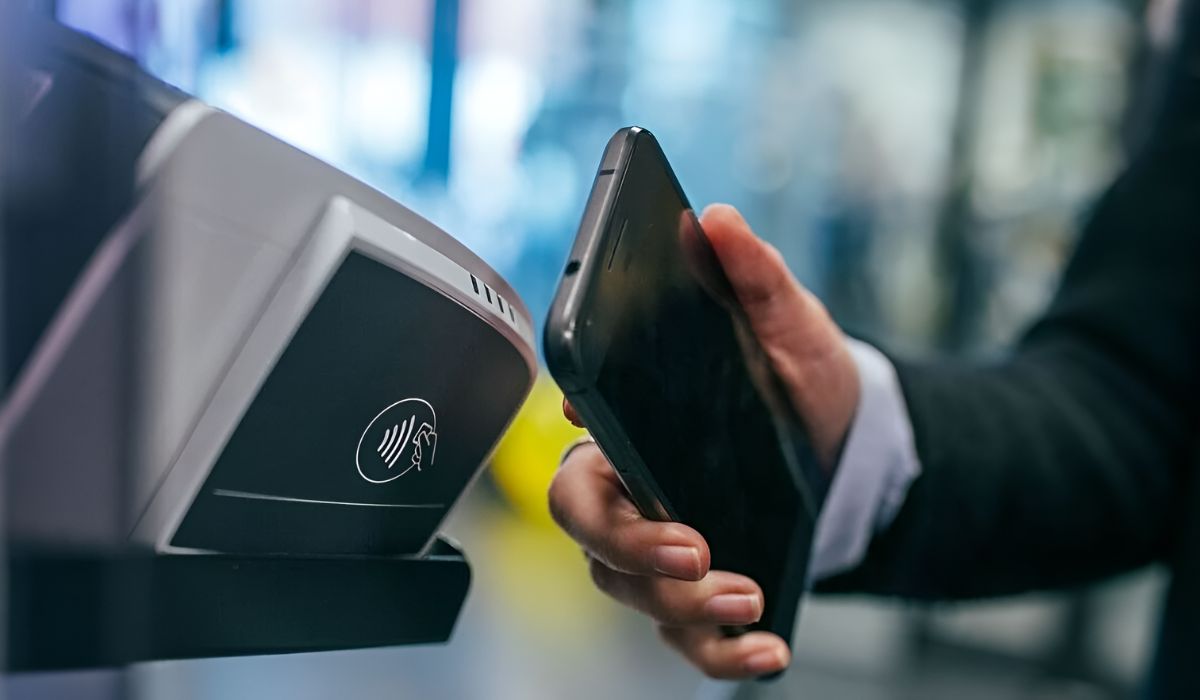Introduction
P2P SMS, which stands for Person-to-Person Short Message Service, is a communication method that allows individuals to send text messages directly to each other using their mobile devices. It is a popular and widely-used form of communication, enabling people to exchange information, stay connected, and share important messages with friends, family, and colleagues.
With the rapid advancement of technology, P2P SMS has become even more prevalent, despite the popularity of alternative messaging platforms such as social media apps and instant messaging services. This is largely due to the simplicity, reliability, and ubiquity of SMS, which remains a core feature of mobile devices across the world.
Unlike other messaging platforms that require an internet connection, P2P SMS operates using the existing cellular infrastructure, making it accessible to virtually anyone with a mobile phone. This makes it an attractive option for communication in various scenarios, including situations where internet access is not readily available or reliable.
P2P SMS allows individuals to send short text messages, typically limited to 160 characters per message, to a recipient’s mobile phone number. These messages can contain important announcements, personal messages, reminders, or any other type of information that can be conveyed through text. Recipients can view and respond to these messages directly on their mobile devices, making it a direct and efficient form of communication.
In the following sections, we will explore how P2P SMS works, the benefits it offers, use cases, and the challenges and limitations faced by this method of communication.
What is P2P SMS?
P2P SMS, or Person-to-Person Short Message Service, is a fundamental mode of communication that allows individuals to send text messages directly to each other’s mobile phones. It relies on the existing cellular infrastructure, enabling seamless communication across networks and devices.
Unlike many messaging apps and services that require an internet connection, P2P SMS operates through the Global System for Mobile Communications (GSM) standard, which underpins most cellular networks worldwide. This means that P2P SMS is incredibly accessible, as it doesn’t depend on internet availability or the use of specific applications.
P2P SMS messages are typically limited to 160 characters per message, although some newer technologies allow for longer messages by automatically splitting and reassembling them on the recipient’s device. This concise nature makes P2P SMS efficient for quick and direct communication, particularly when urgent or time-sensitive information needs to be relayed.
Moreover, P2P SMS is compatible with virtually all types of mobile phones, from basic feature phones to advanced smartphones. This compatibility ensures that individuals can communicate through P2P SMS regardless of the type of device they own.
P2P SMS is not only used for personal communication but also plays a significant role in various sectors, including business, healthcare, and emergency services. It serves as a reliable and immediate means of conveying critical information.
In summary, P2P SMS is a widely-used communication method that enables direct text messaging between individuals using their mobile phones. It operates through the cellular network infrastructure and is accessible on all types of mobile devices, making it a versatile and efficient means of communication.
How does P2P SMS work?
P2P SMS works by utilizing the existing GSM infrastructure and mobile network protocols to enable direct communication between individuals through text messages. The process involves several key steps:
- Sending a message: To send a P2P SMS, the sender composes a message on their mobile device. They enter the recipient’s phone number and the content of the message.
- Routing the message: When the sender hits the send button, the mobile device communicates with the local cellular tower or base station. The message is then transmitted to the mobile network operator’s SMS center, also known as the Short Message Service Center (SMSC).
- SMSC handling: The SMSC acts as a central hub for managing SMS traffic. It receives the message from the sender’s device and makes sure it is properly formatted and ready for delivery. The SMSC also verifies the recipient’s mobile number and checks for any restrictions or routing rules.
- Delivery to the recipient: Once the SMSC processes the message, it is delivered to the recipient’s mobile device through the nearest cellular tower or base station. The recipient’s mobile device receives the message and stores it in the SMS inbox, ready for viewing.
- Displaying the message: The recipient can now view the message on their mobile device. They can read, reply, or take any other necessary action in response to the message.
- Message storage: P2P SMS messages are typically stored in the mobile device’s memory, allowing the recipient to access them at any time. However, there is usually a limit to the number of messages that can be stored, and older messages may be automatically deleted to make room for new ones.
The entire process of sending and receiving P2P SMS messages occurs within seconds, making it a fast and efficient communication method.
It’s important to note that P2P SMS does not require the sender or recipient to have an internet connection or install any specific messaging applications. As long as both parties have a mobile phone and are within the coverage of a mobile network, they can engage in P2P SMS communication.
In summary, P2P SMS operates by leveraging the GSM infrastructure and mobile network protocols. The sender composes a message on their device, which is then routed to the SMSC for processing. The message is then delivered to the recipient’s mobile device, where it can be viewed and acted upon.
Benefits of P2P SMS
P2P SMS offers numerous benefits that have contributed to its enduring popularity and widespread usage. Here are some of the key advantages:
- Universal accessibility: P2P SMS is accessible to anyone with a mobile phone, regardless of device type or internet connectivity. This universal accessibility ensures that messages can be exchanged between individuals in various situations and locations.
- Reliability and reach: SMS messages are delivered with a high success rate, making P2P SMS a reliable form of communication. Even in areas with poor internet coverage or in emergency situations, P2P SMS can still be relied upon to transmit messages effectively.
- Immediate delivery: P2P SMS messages are usually delivered and received within seconds, allowing for real-time communication. This immediacy is especially important when quick responses or time-sensitive information is necessary.
- Low-cost option: Compared to other communication methods, such as phone calls or data-based messaging apps, P2P SMS tends to be more cost-effective. Most mobile service plans include a certain number of SMS messages or offer messaging bundles, making it an affordable form of communication for individuals and businesses.
- Device compatibility: P2P SMS works on virtually all types of mobile phones, from basic feature phones to smartphones. This compatibility ensures that individuals can communicate through SMS regardless of the device they own.
- Privacy and security: P2P SMS messages are generally considered to be private and secure, as they are transmitted over cellular networks and not over the internet. This makes P2P SMS a preferred option for sensitive or confidential information.
- Offline accessibility: P2P SMS can be accessed and read offline, unlike some messaging apps that rely on internet connectivity. This offline accessibility ensures that messages can be viewed at any time, even in circumstances where internet access is limited.
Overall, P2P SMS provides a reliable, cost-effective, and immediate method of communication that is accessible to a wide range of individuals. It offers universal reach, delivers messages promptly, and maintains a high level of privacy and security. These benefits have made P2P SMS an enduring and indispensable means of communication in today’s digital landscape.
Use cases for P2P SMS
P2P SMS has a wide range of applications across various industries and scenarios. Let’s explore some of the key use cases where P2P SMS is commonly employed:
- Personal communication: P2P SMS is widely used for personal communication between family members, friends, and acquaintances. It allows individuals to share information, send greetings, and coordinate plans in a convenient and immediate manner.
- Appointment reminders: Many healthcare providers, salons, and service-based businesses utilize P2P SMS to send appointment reminders to their clients. This helps reduce no-shows and ensures that individuals do not forget important appointments.
- Emergency alerts: In times of natural disasters, public safety organizations and government agencies use P2P SMS to broadcast emergency alerts and notifications. This enables them to quickly communicate important information, such as evacuation orders or severe weather warnings, to a large number of people in the affected area.
- OTP authentication: P2P SMS is often used for two-factor authentication and one-time password (OTP) verification. Online platforms, banking institutions, and other service providers send SMS codes to users’ mobile phones to confirm their identity and secure their accounts.
- Banking and financial services: P2P SMS is utilized for various banking services, including balance inquiries, transaction notifications, and account alerts. It allows individuals to stay updated on their financial activities and provides an additional layer of security for their accounts.
- Customer service: Many businesses use P2P SMS to provide customer support and engage with their customers. It offers a direct and personalized channel for resolving inquiries, handling complaints, and delivering important updates.
- Marketing and promotions: P2P SMS is leveraged for targeted marketing campaigns and promotions. Businesses can send promotional messages, discount codes, and exclusive offers to their customers, allowing for direct and instant engagement.
- Education and information: Educational institutions and organizations use P2P SMS to disseminate important information to students, parents, and staff. It can be used for school closures, exam schedules, assignment reminders, and general announcements.
These are just a few examples of the many use cases for P2P SMS. Its versatility, accessibility, and immediate delivery make it a valuable tool for communication in a wide range of industries, sectors, and situations.
P2P SMS vs A2P SMS
P2P SMS (Person-to-Person Short Message Service) and A2P SMS (Application-to-Person Short Message Service) are two different types of SMS messaging methods. While they both utilize SMS technology, there are important distinctions between them. Let’s explore the differences:
P2P SMS: P2P SMS refers to the direct exchange of text messages between individuals. It allows individuals to send messages from their mobile devices to another person’s phone number. P2P SMS is typically used for personal communication and is often limited to 160 characters per message. It operates within the traditional SMS framework and relies on the cellular network infrastructure.
A2P SMS: A2P SMS, on the other hand, involves the sending of SMS messages from applications or software to individuals. It enables businesses and organizations to send automated messages, notifications, and alerts to their customers or target audience. A2P SMS is commonly used for marketing campaigns, customer engagement, transactional messages, and other automated communication. Unlike P2P SMS, A2P SMS allows for longer messages, often without the 160-character limit.
Here are some of the key differences between P2P SMS and A2P SMS:
- Sender: P2P SMS messages are sent by individuals directly from their mobile devices, while A2P SMS messages are sent by applications or software systems.
- Content and format: P2P SMS messages are usually personalized and limited to 160 characters. A2P SMS messages can contain longer messages, multimedia content, and dynamic content.
- Use cases: P2P SMS is commonly used for personal communication, appointment reminders, and emergency alerts. A2P SMS is utilized for marketing campaigns, customer support, transaction notifications, and other automated communications.
- Delivery speed: P2P SMS messages are typically delivered in real-time, while A2P SMS messages may have varying delivery times depending on the volume and load on the A2P SMS platform.
- Cost: P2P SMS is usually included in mobile service plans or charged at a standard rate. A2P SMS often involves a cost per message or a bundled pricing structure, as it is used by businesses as a marketing or communication channel.
- Opt-in and compliance: A2P SMS messages usually require the recipient’s consent and comply with regulations such as the General Data Protection Regulation (GDPR). P2P SMS messages do not require explicit consent as they are sent directly between individuals.
While both P2P SMS and A2P SMS serve different purposes, they are both valuable forms of communication. P2P SMS enables personal and direct communication, while A2P SMS provides businesses and organizations with an automated messaging channel to reach a wider audience.
Challenges and Limitations of P2P SMS
While P2P SMS is widely used and offers various benefits, there are also some challenges and limitations that users should be aware of. Let’s explore some of the key challenges faced by P2P SMS:
- Character limit: P2P SMS messages are typically limited to 160 characters per message. While this constraint enhances efficiency and readability, it can be a limitation when trying to convey longer or more complex messages.
- Delayed delivery: In some cases, P2P SMS messages may experience delayed delivery or can be delivered out of order. This can impact the effectiveness of time-sensitive communications and cause misunderstandings.
- Network coverage: P2P SMS relies on cellular networks for transmission. In remote or low-coverage areas, the availability and reliability of P2P SMS communications can be compromised.
- Spam and unsolicited messages: P2P SMS, like any form of electronic communication, is susceptible to spam and unsolicited messages. Users may receive unwanted promotional messages or fraudulent texts, leading to inconvenience and potential security risks.
- Interoperability: Different mobile networks and devices may have varying levels of interoperability when it comes to SMS messaging. This can result in compatibility issues, especially when communicating between different mobile networks or using older devices.
- Limited media support: P2P SMS primarily supports text-based communication, and multimedia content such as images, videos, and audio files cannot be directly transmitted through SMS messages. This limitation restricts the ability to send and receive rich media content.
- Cost limitations: While P2P SMS is generally more cost-effective than alternative communication methods, charges may apply when sending messages to recipients outside of one’s local network or when sending messages to international numbers. It is essential to be mindful of potential additional costs.
Despite these challenges, P2P SMS continues to serve as a reliable and widely-used communication method in various contexts. By staying aware of the limitations and addressing them appropriately, users can make the most of the benefits offered by P2P SMS.
Conclusion
P2P SMS, or Person-to-Person Short Message Service, remains an essential and widely-used form of communication in today’s digital landscape. It allows individuals to exchange direct and concise text messages using their mobile devices, leveraging the existing cellular infrastructure. P2P SMS offers numerous benefits, including universal accessibility, immediate delivery, reliability, and low-cost options. It is compatible with various types of mobile phones, ensuring its availability to a wide range of users.
From personal communication to emergency alerts, appointment reminders, and customer support, P2P SMS is utilized in a wide range of industries and scenarios. It’s a versatile form of communication that provides a direct and efficient means of conveying information between individuals.
While P2P SMS has its challenges and limitations, such as character limitations, potential delays in delivery, and susceptibility to spam messages, these can be managed effectively with proper understanding and awareness. By being mindful of these limitations and leveraging the strengths of P2P SMS, users can make the most of this communication method.
As technology continues to evolve, messaging platforms and communication methods may diversify, but the simplicity, reliability, and ubiquity of P2P SMS ensure its relevance and importance in our interconnected world. Whether for personal communication, business needs, or critical situations, P2P SMS remains a reliable and efficient choice for direct communication between individuals.

























